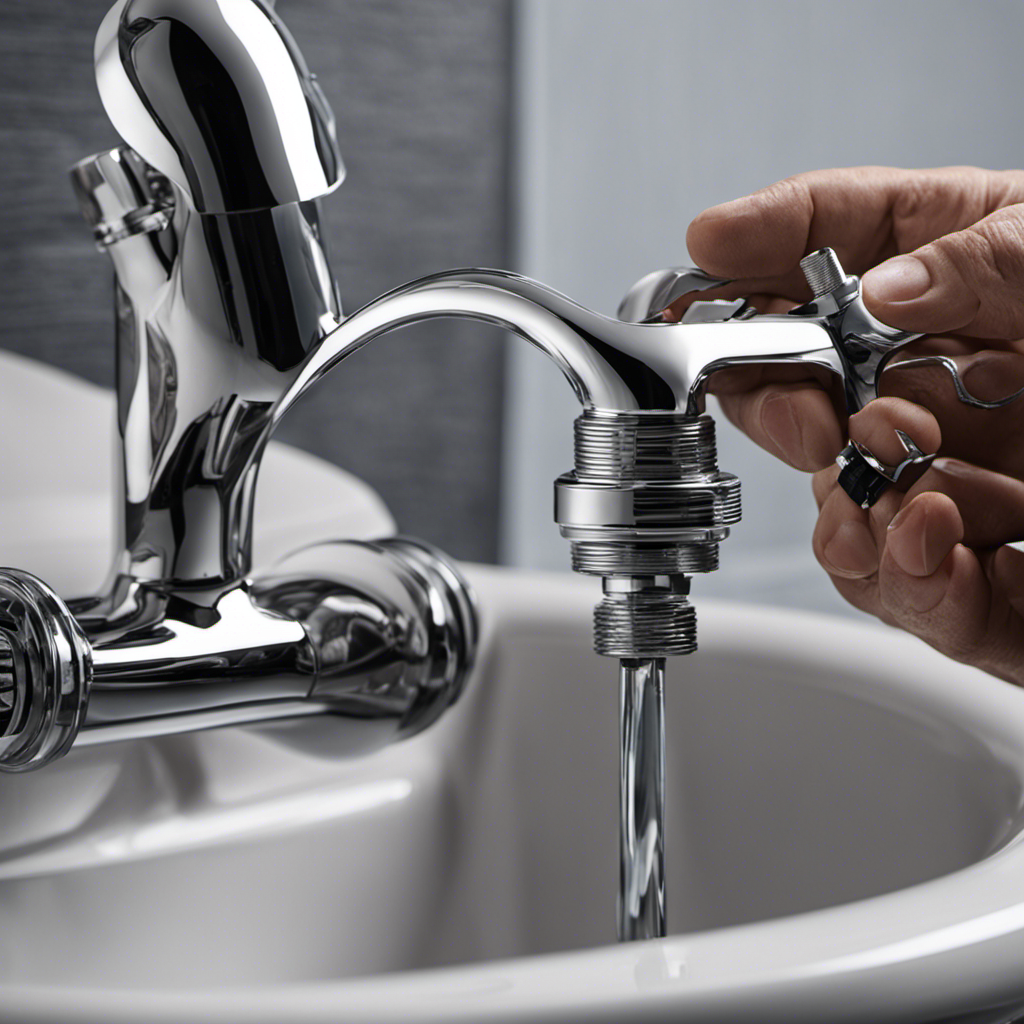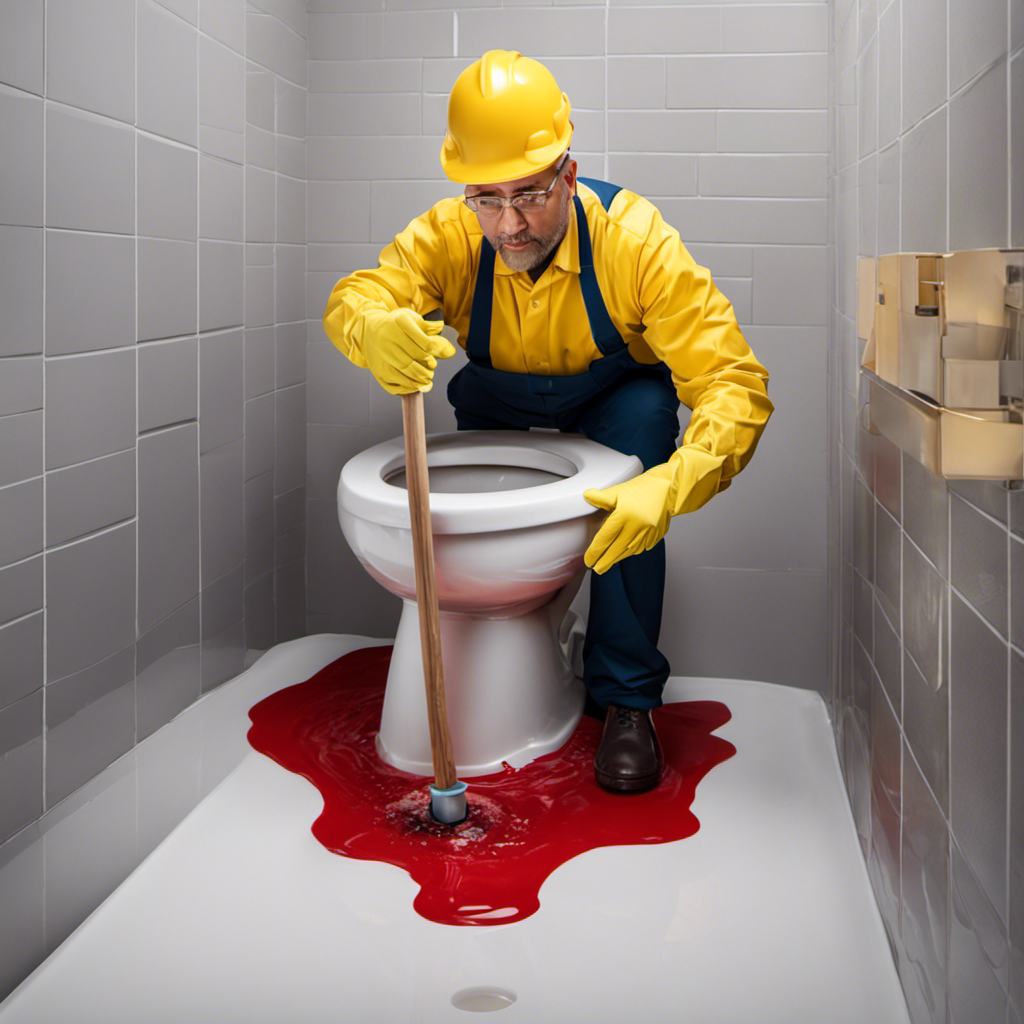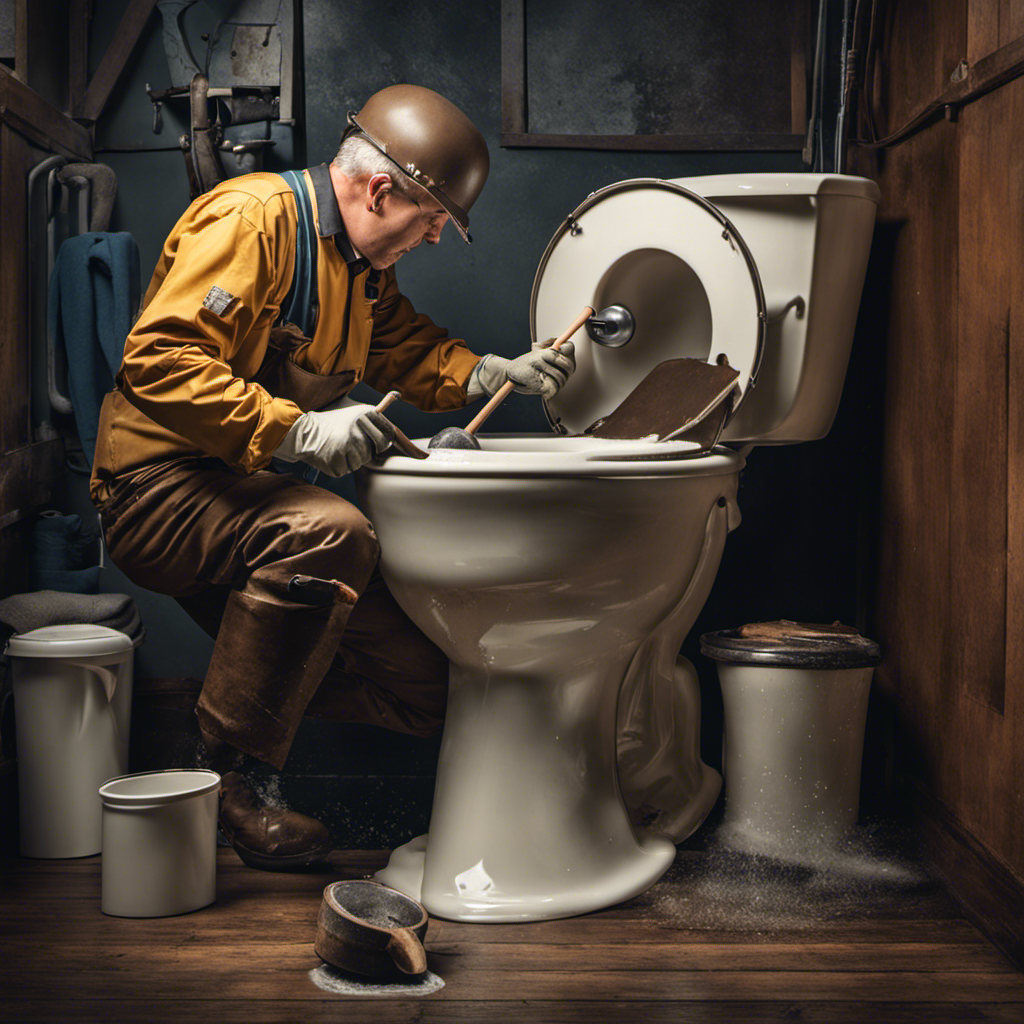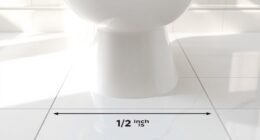Can’t we just imagine the horror of a thunderstorm knocking out the power and leaving us stranded with a non-flushing toilet? Fear not, dear reader, for we have the answers you seek!
In this article, we will explore the fascinating world of flushing toilets without the aid of electricity. Prepare to be amazed as we delve into:
- Gravity flush systems
- Pouring water into the bowl
- Using buckets or large containers
- DIY flush valves
- Alternative toilet options
Let the mastery begin!
Key Takeaways
- Gravity flush systems rely on the force of gravity to remove waste from the toilet bowl.
- Pouring water into the bowl can simulate the effect of a regular flush from the toilet tank.
- Using a bucket or large container to pour water swiftly into the toilet bowl can flush away the waste.
- A DIY flush valve allows manual flushing by releasing water from the toilet tank into the bowl.
Gravity Flush Systems
In our experience, we’ve found that toilets can be flushed without electricity using gravity-based flush systems. Gravity flush systems rely on the force of gravity to remove waste from the bowl. When the flush lever is activated, the water stored in the tank flows down into the bowl, creating a siphon effect that draws the waste away. This type of flush system is commonly found in residential settings.
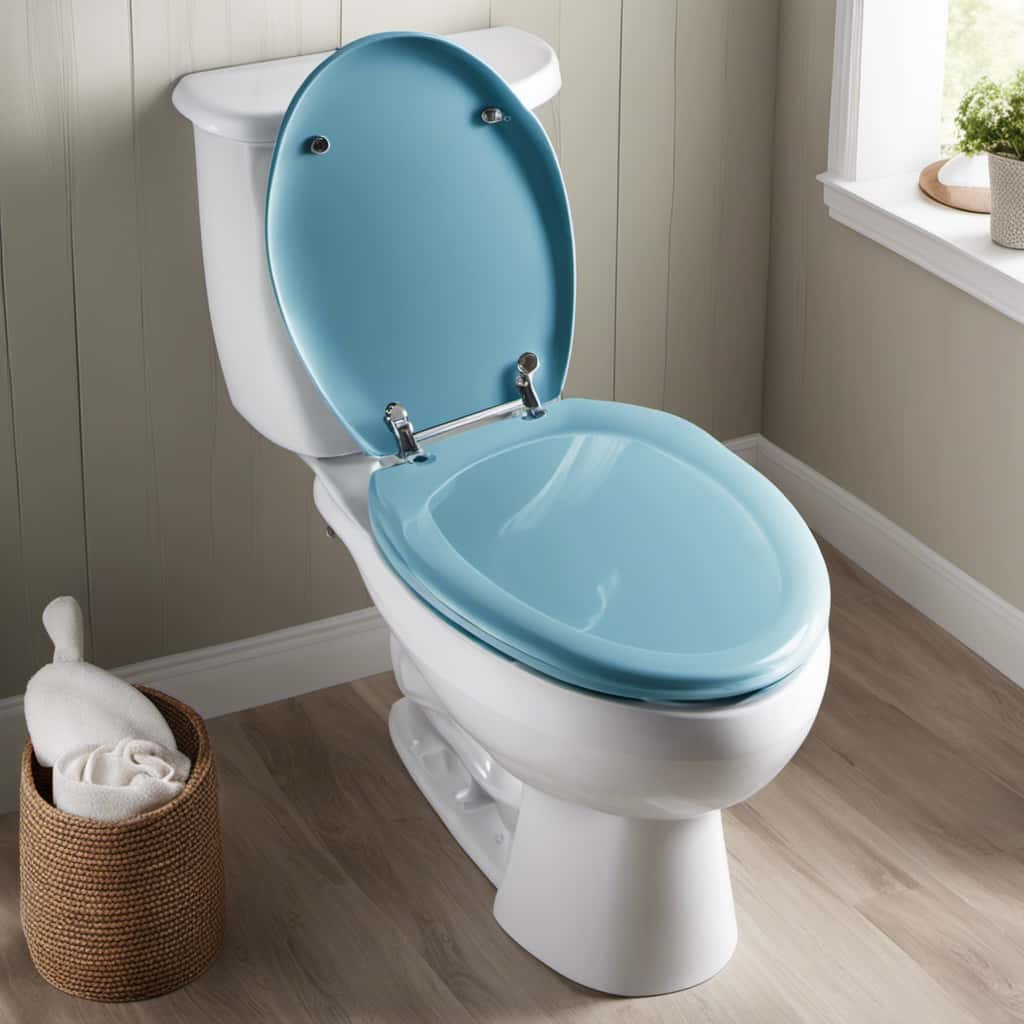
Compared to pressure-assisted flush systems, gravity flush systems are generally quieter and require less maintenance. However, they may not be as effective in removing waste as pressure-assisted systems, which use compressed air to provide an extra forceful flush. It’s important to note that the efficiency of a gravity flush system depends on the design and size of the toilet, as well as the amount of water used per flush.
Now, let’s move on to the next section and explore the option of pouring water into the bowl.
Pouring Water Into the Bowl
To flush a toilet without electricity, one option is to pour water into the bowl. This method is commonly known as a manual flush. Here’s how it works:
- Step 1: Fill a container with water. The amount of water needed may vary depending on the toilet model, but a general rule of thumb is to use about one gallon of water.
- Step 2: Carefully pour the water into the bowl. Aim for the center of the bowl to maximize the flushing effect.
- Step 3: Repeat the process if necessary. If the toilet doesn’t flush completely, you may need to pour more water into the bowl until the waste is properly flushed away.
Pouring water directly into the bowl simulates the effect of water coming from the toilet tank during a regular flush. By following these steps, you can effectively flush a toilet without the need for electricity.

Using a Bucket or Large Container
Our preferred method for flushing a toilet without electricity is by using a bucket or large container. This method, known as the bucket flush, is a simple yet effective solution for emergency sanitation.
To perform a bucket flush, fill the container with water and pour it directly into the toilet bowl. The force of the water will cause the waste to be flushed away. It’s important to pour the water swiftly and from a height to create enough momentum.
Additionally, ensure that you have enough water available for multiple flushes if needed. The bucket flush method is a reliable alternative when electricity isn’t available and can help maintain hygiene and cleanliness in emergency situations.
DIY Flush Valve
One option for flushing a toilet without electricity is to create a DIY flush valve. This simple device allows you to manually flush the toilet by releasing water from the toilet tank into the bowl.
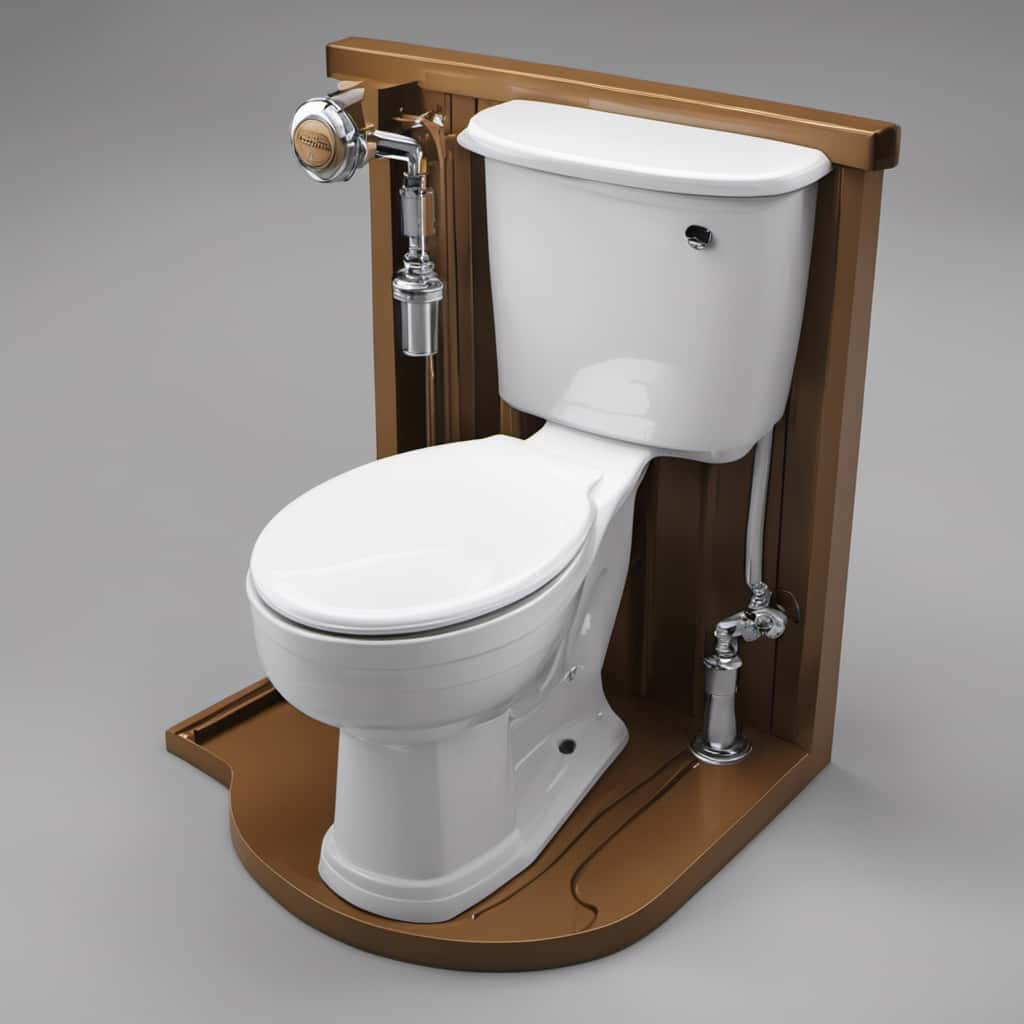
Here are three key steps to creating your own DIY flush valve:
- Locate the toilet tank: The toilet tank is typically located at the back of the toilet bowl. It holds the water used for flushing.
- Identify the water supply: The water supply for the toilet tank is usually connected to a valve located near the floor or wall behind the toilet. This is where you’ll need to shut off the water before installing the DIY flush valve.
- Install the DIY flush valve: To create a DIY flush valve, you can use a plastic tube or a piece of flexible hose. Attach one end to the toilet tank’s water supply valve and the other end to a simple valve or nozzle that you can control to release the water into the toilet bowl.
Alternative Toilet Options
We frequently explore alternative toilet options as we navigate the challenge of flushing a toilet without electricity.
Two popular options are composting toilets and portable toilet options.
Composting toilets are a sustainable and eco-friendly choice. They use natural processes to break down waste into compost that can be safely used as fertilizer. These toilets require little to no water, making them ideal for off-grid living or areas with limited water supply.

Portable toilet options, on the other hand, are convenient for temporary use or during emergencies. They’re compact and easy to transport, making them suitable for camping trips or construction sites.
These options offer practical solutions for maintaining proper sanitation without relying on electricity.
Frequently Asked Questions
How Does a Gravity Flush System Work in a Toilet?
A gravity flush system uses water pressure to create a force that pushes waste down the drain. It relies on the natural force of gravity to move water and waste through the plumbing system without the need for electricity.
Can Pouring Water Into the Bowl Effectively Flush the Toilet Without Electricity?
Yes, pouring water into the toilet bowl can effectively flush it without electricity. This is possible because of the gravity flush system, which relies on the force of gravity to move the waste down the drain. Composting toilets also offer an alternative solution.

Can a Bucket or Large Container Be Used as an Alternative to Flushing a Toilet Without Electricity?
Yes, a bucket or large container can be used as a gravity flush alternative to flushing a toilet without electricity. By pouring water forcefully into the bowl, it can effectively remove waste.
What Is a DIY Flush Valve and How Can It Be Used in a Toilet Without Electricity?
A DIY flush valve is a device that can be used in a toilet without electricity. It provides a non-electric alternative for flushing, allowing for the removal of waste from the toilet bowl.
What Are Some Alternative Toilet Options That Can Be Used in Situations Without Electricity?
In situations without electricity, alternative toilet options such as composting toilets and portable toilets can be used. Composting toilets convert waste into compost, while portable toilets provide a temporary solution for sanitation needs.
Conclusion
In conclusion, when faced with a power outage or lack of electricity, there are several ways to flush a toilet without relying on electrical systems.

Gravity flush systems, pouring water into the bowl, using a bucket or large container, and DIY flush valves are all viable options.
These alternatives allow for a functional and efficient toilet operation, ensuring uninterrupted sanitation even in the absence of electricity.
Just like a well-oiled machine, a toilet can keep running smoothly with the right methods, even when the power goes out.

